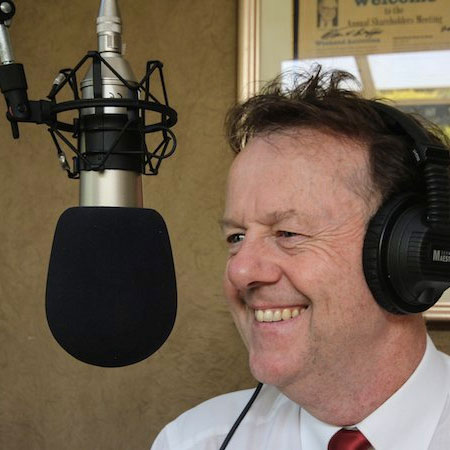(Bloomberg View) — When Hugo Chavez first took office as Venezuela’s president in 1999, the country wasn’t exactly anybody’s economic model. Great oil riches had been squandered, repeatedly. Inflation was a recurrent problem — it had topped 100 percent in 1996. The economy wasn’t growing much. Almost half the population was below the country’s poverty line. One political scientist, sizing things up a few months into the Chavez presidency, went so far as to declare that the nation was “in ruins.”
Still, Venezuela was Latin America’s most affluent country, thanks to all that oil. Its government finances were in tolerably good shape, also thanks to oil. QuickTakeVenezuela
That’s pretty much how things stayed for Chavez’s first six or seven years in office. Yes, he steered a bunch of money to the poor, and did lots of things that drove both labor unions and business leaders nuts. The head of the country’s chamber of commerce even replaced him as president in a 2002 coup attempt that failed after two days. But as of 2005 Venezuela still had the highest per-capita gross domestic product in Latin America (adjusted for purchasing-power parity), and no trouble paying its bills. Chavez supporters could even point to some indicators that poverty and malnutrition were on the decline.
Now, of course, Venezuela’s economy is a disaster. The government stopped releasing regular economic statistics in December, but one official told Bloomberg News the annual inflation rate is 150 percent. The latest estimate from the Troubled Currencies Project run by Steve H. Hanke of the Cato Institute and Johns Hopkins, meanwhile, is that inflation is really 808 percent. Food shortages have become a problem, a debt default seems almost certain, and a complete economic collapse isn’t out of the question. By 2014 Venezuela had, by the World Bank’s PPP-adjusted accounting, slid to fifth place in per- capita GDP in Latin America, behind Chile, Cuba (!), Uruguay and Panama. Mexico and Brazil may pass it this year, despite their own economic troubles. Even next-door neighbor Colombia is getting within striking distance.
Also read: Chavez’s legacy: Venezuela’s contracting economy, 63% inflation
What happened to Venezuela between 2005 and now? Well, this happened:
Note that the divergence between Venezuela’s revenue and spending started long before last summer’s oil-price collapse. When oil prices hit their all-time high in July 2008, government revenue — 40 percent of which comes directly from oil — was already falling. The main problem was Venezuelan oil production, which dropped from 3.3 million barrels a day in 2006 to 2.7 million in 2011. It was still at 2.7 million in 2014, according to the latest BP Statistical Review of World Energy.
Venezuela isn’t running out of oil. Its proven reserves have skyrocketed since 2000 as geologists have learned more about the heavy crude of the Orinoco Belt. But getting at that oil will take a lot of resources and expertise, both things that Venezuela’s state-owned oil company, Petroleos de Venezuela (PVDSA, best known in the U.S. for its Citgo subsidiary), has been lacking in since Chavez initiated a sort of hostile takeover starting in the early 2000s. First he kicked out 18,000 workers and executives, 40 percent of the company’s workforce, after a strike. Then he started demanding control of PVDSA’s joint ventures with foreign oil companies. One could interpret this in the most Chavez-friendly way possible — he was aiming for a more just allocation of his nation’s resources — and still conclude that he made it harder for PVDSA to deliver the necessary tax revenue.
As you can see from the chart, government spending initially followed tax revenue down, although it didn’t quite keep up. Then, starting in 2010, spending surged. The last years of Chavez — he died of cancer in 2013 — and the first under his handpicked successor Nicolas Maduro have been a time of unparalleled fiscal profligacy. One outside estimate puts this year’s budget deficit at 24 percent of GDP. That’s not unheard of for an oil-exporting country in an oil-price slump — Saudi Arabia’s deficit may hit 20 percent this year. But Saudi Arabia had been saving up during the boom while Venezuela was running chronic deficits of more than 10 percent of GDP.
Around 2005, Chavez began calling his approach governing “Socialism of the 21st Century.” But it was more akin to what political scientist Terry Lynn Karl dubbed “petrolization”– making the spending of oil money your government’s main purpose, even after the oil money starts to run out. This has left the country in an impossible situation. To pay its bills the government has borrowed $45 billion from China, but it also printed tons of money. And yes, you could say that the Federal Reserve in the U.S. also printed money during and after the financial crisis, but in Venezuela the money creation has reached such epic proportions that people have to carry the stuff around in bags.
Chavez isn’t around anymore, but this is clearly his crisis. He took a country that was muddling along, and put it on course to become a basket case. There are worse kinds of rulers than that — those who massacre their own people or lead their nations into hopeless wars. But in terms of basic macroeconomic management Hugo Chavez has to go down as one of the most disastrous leaders the world has seen quite in a while.



